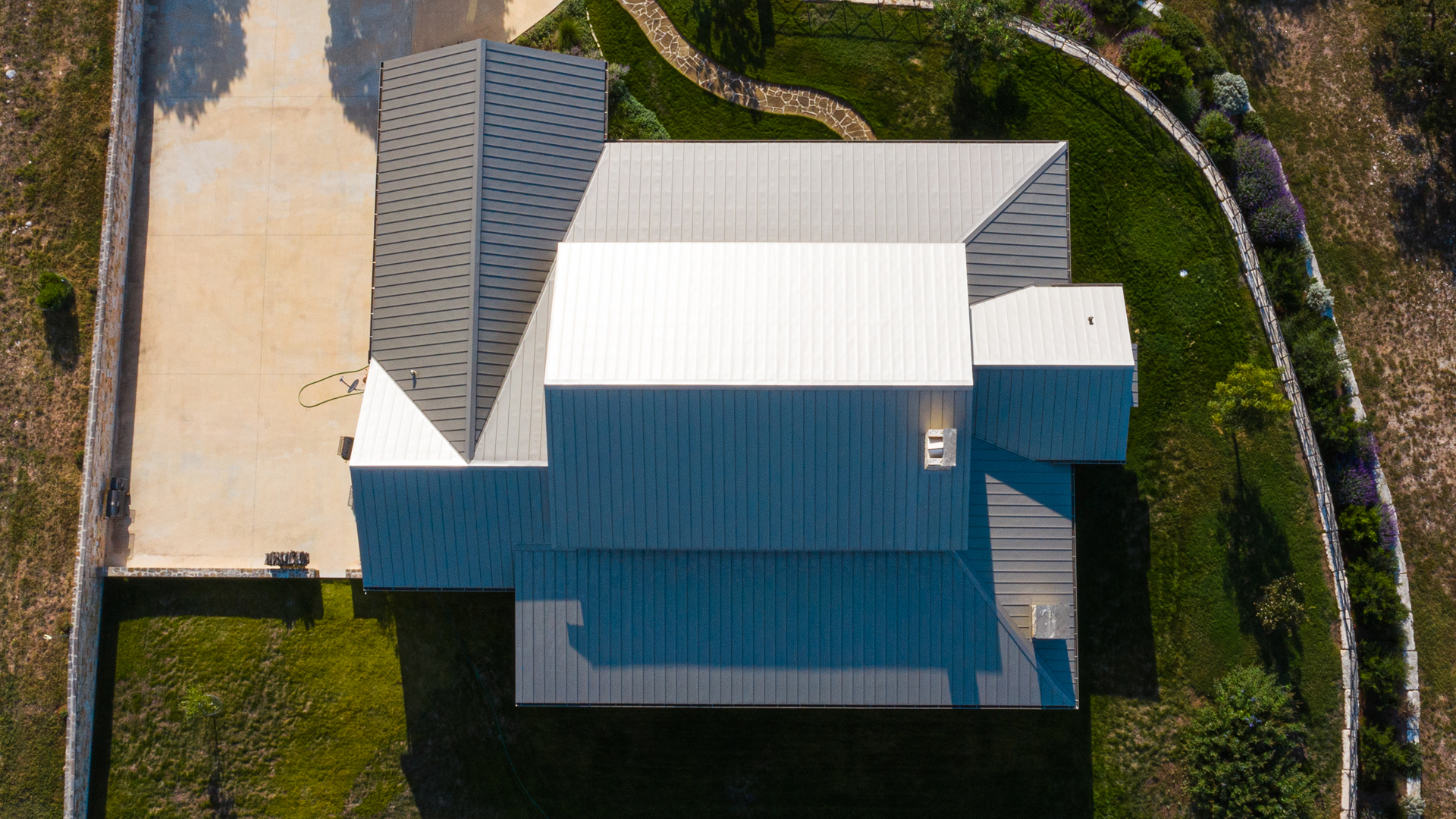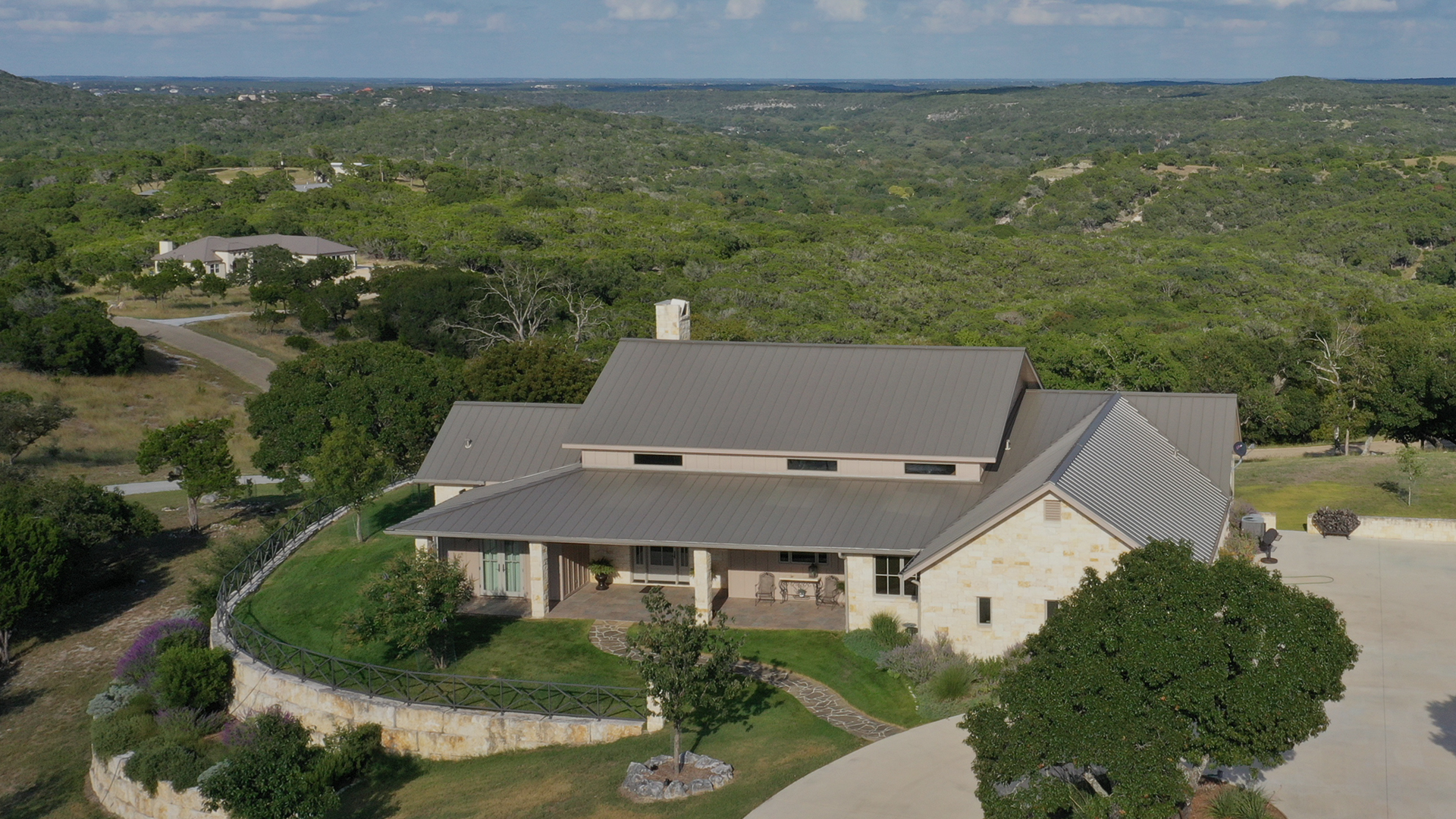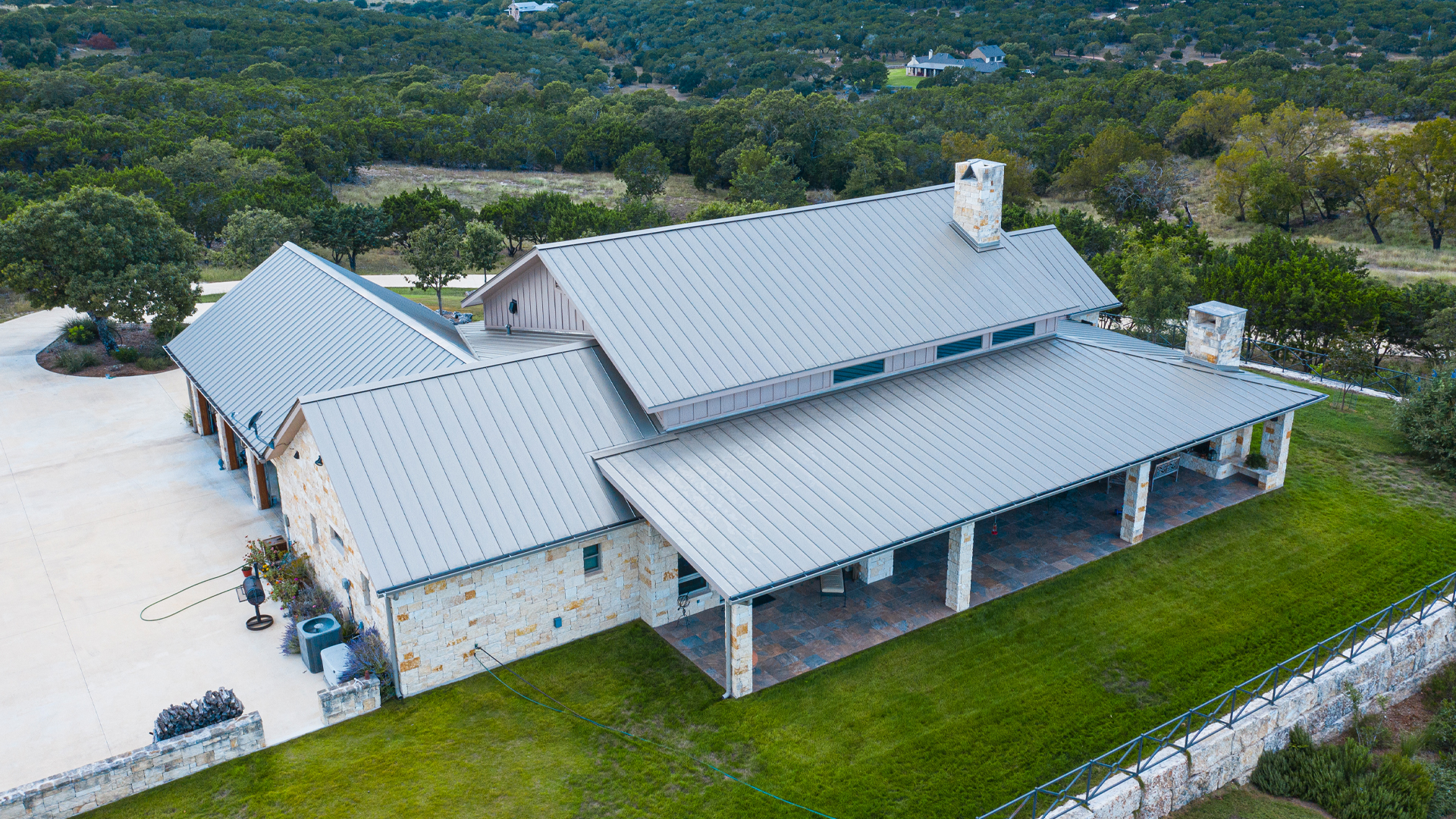The Kerrville

Background
Ingram, TX, just outside of Kerrville, is home to a community of newly built luxury homes, surrounded by large rolling hills and picturesque streams of the Guadalupe River Valley. The neighborhood comprises five 23-acre lots with 3,000 sqft homes and features a residential list of world-class artists and performers. This particular housing project was looking for a roofing company that could design and install a metal roof that also adhered to the State of Texas and municipal requirements. Other environmental considerations include rainwater runoff requirements, implementing thermal value roofing, and utility consumption. Knowing all this, Schulte Roofing took up the challenge and prepared to create a metal roof that the homeowners could be proud of.

Challenges
Getting the materials to where they needed was the first big challenge that our team would have to address. The community was situated in an area that only allowed one long, narrow road. This was the only way to get in and out of the community. And since the typical 18-wheel delivery truck is used to carry the materials, we knew it would now be too large to fit on the winding road. In order to avoid any potential delays, our project manager was prepared to plan for an alternative method to get the materials there safely.
The second challenge came in the shape of rules and regulations. When discussing the project, we were told that the community followed strict ecological standards set by the State of Texas and adopted by the HOA. That means each home in Kerrville, Texas, was required to pass an ecological component to the architectural review. We then had to create a metal roof that could also be adapted for rainwater harvesting, which the city implemented to fight against the droughts that commonly happen in the area during the summer months.
We also found that there were 2 different roofing structures joined by one roofing system. To bypass possible water spilling into the home due to two separate chimneys not connected to the roof, the crew designed a roof that would prevent any leaking after the house settled following construction.

Solutions
Fortunately, our crew successfully got the materials to the property on time. We did this by splitting the material loads into multiple smaller trucks and routing them out of San Antonio. These delivery trucks could then safely make their way through the tight streets and arrive at the site.
The team then started developing the roof. They began by using a well-known metal roofing system and custom-designed it to fit the architectural requirements of joining the interior and exterior fireplace chimneys. We also designed and built a concealed fastener metal roofing system due to its ability to be adapted for rainwater harvesting.
After calculating and planning the roof for the future rainwater collection system, our team designed a metal roofing system that could channel water into the custom metal gutter system. Next, we installed a prefabricated gutter that easily adapted to the rainwater collection systems. This allowed water to be returned to the groundwater reservoirs. Eventually, the collection system would retroactively be suited to the existing gutter system.
Finally, our team fabricated the metal roof on-site to keep on top of any possible design issues. Since the two chimneys were a top priority when creating the roof, the crew installed metal flashing and panels along the roof’s perimeter to channel the water safely around and away from the chimneys.
While working to solve the multiple challenges for the roofing project, our team created a metal roof that was impact resistant, low maintenance, thermal valued, and implemented with the best water collection system possible.
